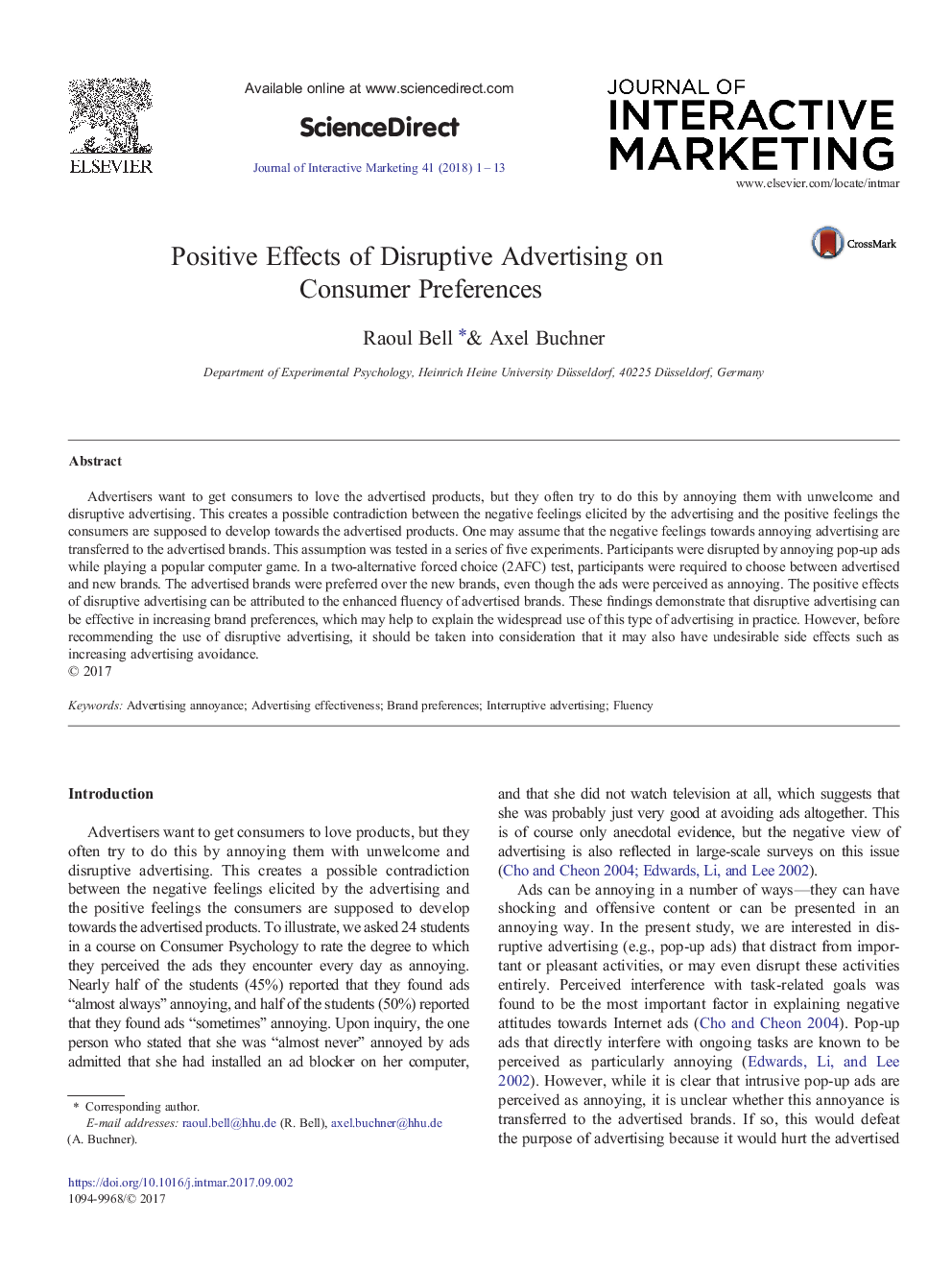| Article ID | Journal | Published Year | Pages | File Type |
|---|---|---|---|---|
| 7246792 | Journal of Interactive Marketing | 2018 | 13 Pages |
Abstract
Advertisers want to get consumers to love the advertised products, but they often try to do this by annoying them with unwelcome and disruptive advertising. This creates a possible contradiction between the negative feelings elicited by the advertising and the positive feelings the consumers are supposed to develop towards the advertised products. One may assume that the negative feelings towards annoying advertising are transferred to the advertised brands. This assumption was tested in a series of five experiments. Participants were disrupted by annoying pop-up ads while playing a popular computer game. In a two-alternative forced choice (2AFC) test, participants were required to choose between advertised and new brands. The advertised brands were preferred over the new brands, even though the ads were perceived as annoying. The positive effects of disruptive advertising can be attributed to the enhanced fluency of advertised brands. These findings demonstrate that disruptive advertising can be effective in increasing brand preferences, which may help to explain the widespread use of this type of advertising in practice. However, before recommending the use of disruptive advertising, it should be taken into consideration that it may also have undesirable side effects such as increasing advertising avoidance.
Keywords
Related Topics
Social Sciences and Humanities
Business, Management and Accounting
Marketing
Authors
Raoul Bell, Axel Buchner,
